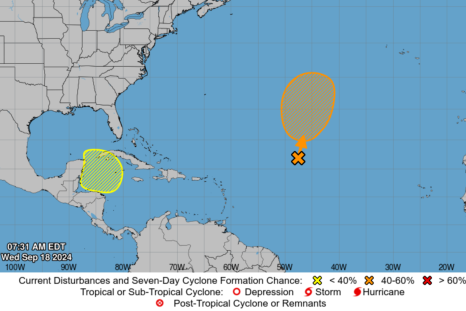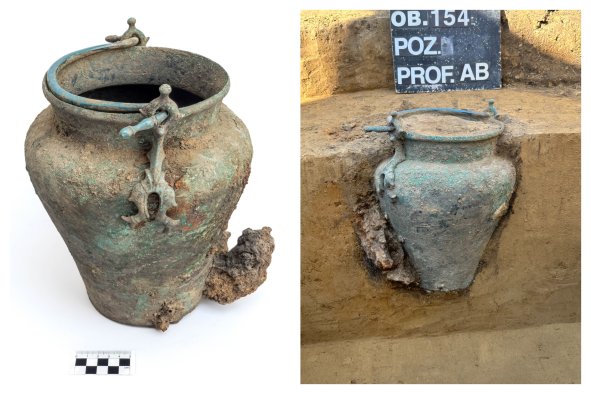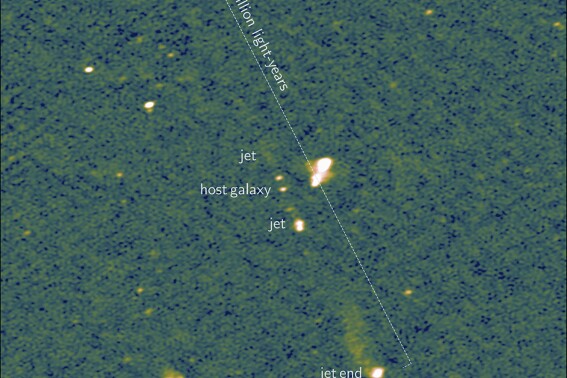A mysterious example of Indigenous rock art from South Africa may depict a "strange" animal that lived more than 200 million years ago and went extinct long before the appearance of the first humans, a researcher has proposed.
For a study published in the journal PLOS ONE, the author investigated the Horned Serpent Panel, a section of rock wall located at the La Belle France site in the country's Free State Province, which features artworks painted by the San people at least two hundred years ago.
The paintings, found on the wall of a rock shelter under a short, sandstone overhang, portray animals and other elements associated with the San. Among the animals is an enigmatic long-bodied creature with downward-turned tusks.
The animal does not appear to match up with any known species that lived in the area when the artwork on the panel was originally painted, somewhere between 1821 and 1835. Now, Julien Benoit with the University of the Witwatersrand in Johannesburg, South Africa, has put forward the hypothesis that the painting was intended to represent a dicynodont.
Dicynodonts were herbivorous animals that possessed a turtle-like beak and walrus-like tusks. They lived between around 265 to 200 million years ago, appearing even before the emergence of the first dinosaurs. They belong to the therapsids, a group of "strange" creatures that would eventually evolve into the mammals later in the Mesozoic Era (around 252-66 million years ago).
The San people are known to have incorporated various aspects of their environment, including animals and fossils, into their art. Notably, therapsid fossils are "incredibly abundant and diverse" in South Africa's Karoo Basin, a geologic region that extends across two-thirds of the country, including where the Horned Serpent Panel is located, Benoit told Newsweek.
Among these fossils are those of dicynodonts, which are often clearly visible. The dicynodont fossils identified around the La Belle France site tend to be around 250 million years old.
"In many cases, their skulls are naturally exposed by erosion in spectacular ways, making them easy to find and collect, and their tusks are so conspicuous that their anatomy is not difficult to interpret, even to the untrained eyes," Benoit wrote in the study.
"The downturned tusks of dicynodonts resemble those of the tusked animal of the Horned Serpent Panel. Archaeological evidence directly supports that the San did find and transport fossils over long distances, and could interpret them in surprisingly accurate ways. If the San could identify the fossilized skulls of dicynodonts as belonging to once alive animals, it is possible that their tusked faces could have contributed to their rock art."
Benoit became aware of the Horned Serpent Panel while reading about the San culture and their paintings, and visited the site to see the paintings for himself.
"I came across the Stow and Bleek book about San rock art and when I saw their beautiful reproduction of that tusked animal, I immediately thought that this could well be a dicynodont. And I needed to see the real one with my own eyes. The original painting, when I found it, did not disappoint!" he told Newsweek.
When visiting the site, Benoit found that the tusked creature painting corresponded well with dicynodont fossils—an interpretation that is also supported by San myths of large animals that once roamed the region but are now extinct.
There is room for other possible interpretations, as noted in the paper, but Benoit said the dicynodont hypothesis seems most likely and is supported by several lines of evidence.
"The only abundant animal that the San may have encountered and looked exactly like this are extinct ones: the dicynodonts," he told Newsweek.
"Pure imagination may be safely ruled out as the San did not paint things that were completely imaginary. Their art was based on real-life elements, mostly animals. A walrus is excluded because no walrus has ever lived in sub-Saharan Africa. A saber-toothed cat is excluded too as their fossils are too rare and not found in the area. Other tusked animals simply do not match."
If the tusked figure is, indeed, a representation of a dicynodont—a creature that went extinct long before humans even appeared in Africa—the painting would predate the first formal scientific description of one of these animals by at least 10 years.
"The relevance of the discovery is twofold: first, for the history of science, as the San would have found dicynodonts before Western scientists did. This brings a new perspective to the history of sciences and how we conceive 'discoveries,'" Benoit said.
"Secondly, it is cultural, as the San would have integrated fossils into their belief system, which may shed some light on other mysterious rock art that have eluded explanation so far."
Do you have a tip on a science story that Newsweek should be covering? Do you have a question about archaeology? Let us know via science@newsweek.com.
Reference
Benoit, J. (2024). A possible later stone age painting of a dicynodont (Synapsida) from the South African Karoo. PLOS One, 19(9). https://doi.org/10.1371/journal.pone.0309908
Disclaimer: The copyright of this article belongs to the original author. Reposting this article is solely for the purpose of information dissemination and does not constitute any investment advice. If there is any infringement, please contact us immediately. We will make corrections or deletions as necessary. Thank you.




